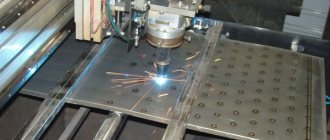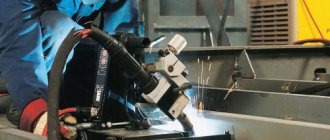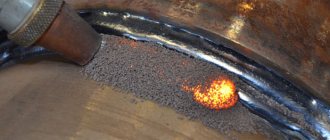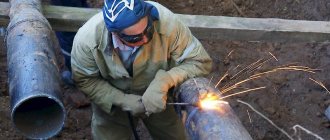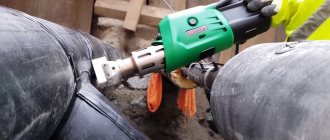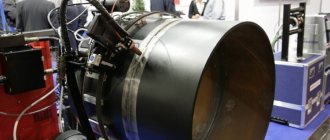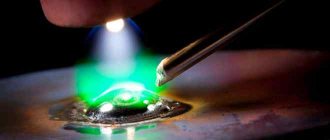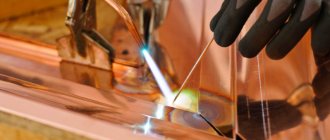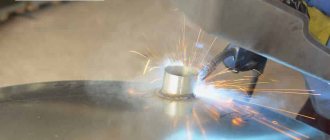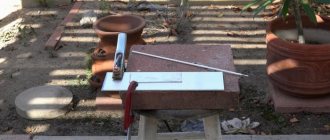Welding is an important stage in the creation of new objects and their elements. The performance characteristics of the connections depend on the correctness of the process. Welded structures are created in several ways, using different materials and apparatus. The choice of technology depends on the required characteristics of the seams.
Welding is an important stage in the creation of new objects and their elements.
Key Benefits
The positive qualities of steel structures include:
- Increased load-bearing capacity. Despite its small size, the structure can withstand high loads. This is due to the increased strength of the metal.
- Increased reliability. At the preliminary stages, accurate calculations are made, which helps to obtain the required performance characteristics.
- Easy to install and transport. Metal elements are much lighter than concrete or stone ones.
- Integrity of metal or seams, allowing the formation of sealed pipelines and tanks.
- Possibility of assembling structures both in industrial conditions and at home.
- Ease of use. As loads increase, the products can be strengthened. They can easily be reconstructed and repaired.
Classification of welded structures
There are no uniform methods for dividing welded elements into categories. However, it is possible to classify structures according to formation technology, purpose, and performance qualities.
According to the method of making blanks
When connecting steel parts, the following types of structures are obtained:
- cast-stamped or cast-welded;
- leafy;
- stamp-welded;
- forged and welded.
By purpose
Depending on the scope of application, the designs are:
- mechanical engineering;
- ship;
- aviation;
- construction;
- carriage;
- others.
We recommend reading: Types of welding stations and information about them
Welding of ship structures.
By features of use
Based on operating conditions, structures are divided into:
- On beams - parts that perform transverse bending. By rigidly connecting such elements, frames are obtained.
- Columns are parts subject to compression and longitudinal bending.
- Lattice elements, which consist of rods combined into nodes. They experience both tension and compression. The category is divided into reinforcement cages, trusses, masts.
- Structures subject to increased pressure. When manufacturing them, it is necessary to comply with the requirements for tightness of seams. This category includes containers and reservoirs, pipelines.
- Transport hull structures. Such types are exposed to dynamic loads. Increased demands are placed on their rigidity. Structures must have sufficient strength with low weight. The transport category includes automobile bodies and carriage bodies.
Manufacturing technology of welded structures.
The production technology of welded structures includes several main stages. For the manufacture of such metal structures, various welding methods can be used - from automatic and semi-automatic to manual electric arc. Welding can be carried out in shielding gases, submerged arcs, etc. The methods of welded joints can also be different - T-joints, end, butt, corner, etc.
The first stage in the production of welded structures is the preparation of all technical documentation necessary to create a part for which certain requirements are imposed.
Another important stage in the production of welded structures is the preparation of individual parts for welding. And here the greatest attention should be paid to the preparation of the edges of the parts. The edges are ground down at a certain angle - and this can be done either with a grinding machine or with a regular file. The shape of the edge cutting can also be different, but the X-shaped cutting is considered the most effective. The fact is that it is precisely this approach to cutting edges that can guarantee the lowest possible volume of deposited metal obtained in the process of heating the edges of parts, which means that the quality of the resulting joint will be higher.
One of the important stages in the production of welded structures is their assembly. This is not only a process that requires a lot of attention, but also a labor-intensive job - for example, if the production of a structure is individual in nature, then the assembly process can take up to 50% of the total production time. The fact is that the further quality of the entire welded joint depends on the quality of the assembly. The main requirements for the assembly of a welded structure are:
- exact compliance with the dimensions specified in the design documentation
- correct location of gaps and their constant sizes
- exact location of structural parts, in full accordance with the design documentation
- accuracy of structural planes and angles at which they intersect
- ensuring the minimum possible tolerance for displacement of parts if they are butt-joined.
In conclusion, it should be noted that the development of technology for the production of welded structures is carried out individually for each individual similar structure in accordance with the technical documentation, the requirements for the finished product, as well as the equipment available to the manufacturer.
Materials for manufacturing elements of welding structures
When creating welded parts use:
- Structural steels. They are used in components of automobiles, engineering communications and devices subject to high loads. Such materials can withstand average temperatures and are sensitive to the influence of aggressive substances.
- Tool steels. They are used in the production of saws, knives, scalpels and other cutting devices. The metal must be hard, wear- and heat-resistant.
- Boiler rooms steel. Used in the production of heating equipment. The elements must withstand heating up to +450 °C and moderate mechanical loads.
- Special steels. Alloys with special properties are used in chemical engineering and other similar industries.
- Electrical steels. They are used to create magnetic cores for various purposes.
- Copper alloys. Characterized by resistance to high pressure, corrosion, and friction. This category includes brass, bronze, a mixture of copper and nickel.
- Magnesium and aluminum alloys. They are characterized by light weight, corrosion resistance, and strength. Alloys of this type are used in aircraft construction. They are either cast or wrought.
- Titanium alloys. They are characterized by high strength with medium density, resistance to oxidation and aggressive substances.
We recommend reading: How to cut metal edges for welding
Welding of standard structures, presentation for a lesson on the topic
Slide 1
Features of welding of standard structures January 21, 2014
Slide 2
Classification Depending on the characteristic features of the operation of welded structures, the main types of welded elements and structures can be distinguished: Beams - structural elements that work mainly in transverse bending. Beams rigidly connected to each other form frame structures. Columns are elements that work primarily in compression or compression with longitudinal bending. January 21, 2014
Slide 3
Lattice structures are a system of rods connected at nodes in such a way that the rods experience mainly tension or compression. These include trusses, masts, reinforcement meshes and frames. Shell structures are under excessive pressure. The main requirements for them are tightness of connections. This type includes various containers, vessels and pipelines. January 21, 2014
Slide 4
Hull transport structures are subject to dynamic loads. They must be of high rigidity with minimal weight. The main structures of this type are the hulls of ships, carriages, and car bodies. Parts of machines and devices operate primarily under variable, repetitive loads. They must have precise dimensions, ensured mainly by machining blanks or finished parts. Examples of such products are frames, shafts, wheels. January 21, 2014
Slide 5
Features of welding of standard structures The technological process of manufacturing parts from rolled products begins with the selection of metal according to size and steel grade and may include the following operations: straightening, marking, cutting and edge processing, bending and cleaning for welding. January 21, 2014
Slide 6
Edit. It is carried out in a cold state, limiting the relative residual elongation of the most deformed areas to about 1% or a bending radius equal to 50 sheet thicknesses. If large deformations are necessary, straightening is performed after heating to a temperature of 900... 1000°C. The waviness of sheets and strips with a thickness of 0.5...50 mm is eliminated by passing them between the upper and lower rows of rolls of sheet-straightening machines by repeated bending. Sheets with a thickness of more than 50 mm are straightened under a press. January 21, 2014
Slide 7
Saber shape (curvature in the plane) can be corrected to a limited extent. When straightening or bending sheets with butt seams in rollers, strengthening the seam can lead to the appearance of cracks. Small- and medium-sized, as well as profile rolled products are straightened on roller machines operating according to the same scheme as sheet straightening machines. Large sections are straightened on straightening presses by bending. January 21, 2014
Slide 8
Marking Individual marking is labor-intensive. Basting is more productive, but making special basting templates and storing them is not always advisable. The use of marking and marking machines with a pneumatic punch ensures marking speeds of up to 8... 10 m/min with an accuracy of ± 1 mm. The use of devices for measured cutting of rolled products, as well as gas-cutting machines with a large-scale photocopying control system or program control allows you to do without marking. January 21, 2014
Slide 9
Cutting and edge processing Mechanical cutting of sheet parts with straight edges made of metal up to 40 mm thick is usually carried out using guillotine shears or press shears. When the length of the cut element is 1...4 m, the size error is ±(2.0...3.0) mm when cutting along the marking and ±(1.5...2.5) mm when cutting along the stop. January 21, 2014
Slide 10
Using circular shears, sheet parts with non-straight edges up to 20...25 mm thick are cut out. When cutting shaped steel crosswise, press shears and combined shears with shaped knives or circular saws are used. With the largest size of parts 1...4 m, the permissible deviations in dimensions can be ±(1.0...2.5) mm, respectively. January 21, 2014
Slide 11
Separation thermal cutting is less productive than shear cutting, but is more versatile, and it is used to produce steel blanks of different thicknesses, both straight and curved profiles. Along with gas-flame oxygen cutting, plasma-arc cutting is used, through which almost any metals and alloys are processed. January 21, 2014
Slide 12
Mechanical processing of edges on machines is carried out: to ensure the required assembly accuracy for the formation of chamfers with a complex outline, if technical conditions require the removal of metal from the edges after cutting (fire or scissors). January 21, 2014
Slide 13
Bending To obtain cylindrical and conical surfaces from sheet elements with a thickness of 0.5...50 mm, bending is carried out in sheet bending rollers. When the ratio of bending radius to sheet thickness is more than 25, bending is performed in a cold state, with a smaller value - in a hot state. The required curvature at the longitudinal joint is achieved either by pre-bending the edges or by calibrating the already welded shell. January 21, 2014
Slide 14
Sheet elements with a double-curvature surface are flexible in special rollers with rollers of variable cross-section, hot stamping, and also explosion stamping. Hot bending of thick sheet metal is carried out on presses. For transverse bending of rolled profiles and pipes, roller bending machines and pipe bending machines are used. Longitudinal bending produces bent profiles of various sections and corrugated sheets. January 21, 2014
Slide 15
Cleaning Sheet metal and profiles, as well as workpieces for welding, can be cleaned using rotating mechanical brushes or in shot blasting chambers. If subsequent installation outdoors is necessary, cleaning is supplemented by applying an anti-corrosion coating, which allows welding to be carried out without removing it. Chemical cleaning by dipping and jet cleaning is also used. January 21, 2014
Slide 16
Assembly operations They are carried out to ensure the correct relative position and fastening of the parts of the assembled product. The assembled unit must have the rigidity and strength necessary both when removing it from the assembly fixture and transporting it to the welding site, and to reduce temporary welding deformations. Therefore, assembled parts are most often fixed using tacks. The dimensions and location of the tacks are selected based on the conditions of rigidity and strength, as well as the possibility of their complete overwelding when laying the main seams. January 21, 2014
Slide 17
The use of assembly-welding devices allows in some cases to do without tacks. Welding fixtures provide not only tilting of the product, but also movement of the welding head relative to the product or the product relative to the head at welding speed. January 21, 2014
Connections used in welding structures
The most common types of seams are:
- Butt joints, characterized by resistance to static and dynamic loads. When forming joints, almost all welding technologies can be used.
- Corner, performing connecting functions. Connections are not capable of transferring workloads. Any welding method is used to form seams.
- Laps used to connect sheet elements. They differ from butt ones in less strength.
- T-bars used when working with spatial structures.
Less common are slotted, end and other connections.
Butt welding joints.
We recommend that you read
Existing types of welded joints
Features of creating welded structures
When forming objects, take into account that:
- Despite its apparent integrity, the structure still consists of individual parts that are connected by one welding method or another. When designing, the rigidity, expected loads, and strength of the prefabricated object are taken into account. However, you need to remember that the seams weaken over time.
- It is recommended to use computer programs for calculations. They correctly select the types of seams, calculate permissible loads, and create three-dimensional layouts.
Standards and regulations
Requirements for the working qualities of welded metal structures used in construction are specified in GOST 27772. SNIP II 23-81 is also an important regulatory documentation.
The requirements specified in these acts apply to the work of professionals. However, you need to familiarize yourself with them before performing welding in a home workshop.
When using a hand-held device, take into account the requirements of GOST 5264-80. Standard 14771-76 describes the features of gas shielded welding. Regulatory documentation also regulates the process of preparing the parts to be joined.
Basic equipment for the production of welded structures
To produce welded structures, welding equipment is required. It consists of: power supplies, auxiliary devices and a control unit. There are several types of such complex devices, differing in components.
Transformers - reduce (convert) the alternating current voltage, which is necessary to create an electric welding arc. The operation of such devices and their configuration depends on magnetic dispersion (increased or simple) and phase control - the characteristics of the transformer.
Rectifiers - are necessary to convert and reduce alternating current, this affects the evenness of the resulting weld and uniform strength. With a straightener, metal spattering is significantly reduced, which leads to a reduction in production time, since there is no need to clean the weld from the melt. Consisting of a block of semiconductor diodes, rectifiers work with any electrodes, welding all metals and their alloys.
An inverter is a network rectifier that smoothes alternating current. The resulting direct current enters the inverter. Then the high frequency transformer and power rectifier transmit direct current, which is stable and has high power. Such pieces of equipment allow you to fine-tune the equipment to work with any electrode and perform various tasks.
Semi-automatic devices are devices for working in a gas environment.
The gas can be inert, such as argon or helium, as well as active, such as carbon dioxide, nitrogen or oxygen. The choice of gas used for the production of welded structures depends on the materials of the parts being connected. The electrodes are supplied to the connection point automatically, and the welding parameters are adjusted either manually or also in automatic mode. The use of semi-automatic machines in the production of welded structures increases the speed of work. One of the reasons for this is that there is no need to replace the electrode, which is supplied to the welding site automatically. This creates an even and high-quality seam. Basically, semi-automatic machines are used in production for large volumes of work.
Welding defects
Disadvantages can be internal or external. The first type includes:
- Hot or cold cracks. The former appear during the heating period, the latter during cooling.
- Pores are gas-filled cavities. Appear when the electrode is moved too quickly.
- Foreign inclusions consisting of tungsten, oxides or slag. They arise due to the destruction of the gas cloud protecting the weld pool. When such defects appear, re-cutting of the edges followed by welding is required.
We recommend reading: How to treat an eye burn from welding
External defects include:
- Lack of fusion or lack of penetration. When multilayer welding, a seam does not form in some places. This reduces the strength of the structure.
- Burns formed when edges penetrate through. The appearance of a defect is facilitated by slowly moving the electrode at a high current.
- Sagging resulting from the contact of the melt on the main surface.
- Craters formed at arc separation sites. Holes appear when novice welders perform work.
- Oxide films or scales that appear when the weld interacts with air.
- Fistulas formed due to improper preparation of parts.
Types and classification of defects
Quality control of connections eliminates such problems. You can see some defects, such as burns or sagging, during the initial inspection.
Famous welded structures
The most popular objects of this type are:
- Eiffel Tower. It attracts the attention of tourists with its unusual structure.
- Sydney Theatre. The basis of the building are piles. The roof is made of flexible and durable metal.
- "Tree of Heaven" (Japan). The television tower is created on the basis of interconnected metal structures. The 68 m high building can withstand intense tremors. The outer part of the tower is made of steel pipes.
- Burj Khalifa (Dubai). The building has a welded metal frame.
Welded products from OMR Firm LLC
If it is necessary to manufacture welded metal structures to order, OMR Firm LLC is ready to carry out the work in a short time. The high level of qualifications of our specialists and modern technical equipment allow us to fulfill orders efficiently and quickly, regardless of the complexity of the design.
To produce a welded metal structure, our specialists need a technical design of the product, which is previously agreed upon and approved by the customer. After the approval procedure, the craftsmen begin to study the technological requirements and implement the order. We mainly engage in the production of welded metal structures according to individual customer projects.
Contact us to clarify the cost, submit a production request or receive professional advice. Our specialists will answer your questions in detail and consider in detail all aspects of the production of the required design.
Additional Information
Each type of welded structure is connected in its own way. Recommended technologies are indicated in drawings and designs. After welding is completed, the object must acquire the required strength. This places the responsibility on the welder for compliance with the rules and regulations of the process. Special requirements are imposed on metal structures subject to high loads. The service life of the entire facility depends on the quality of welding. After completion of the work, the structures are thoroughly inspected.
Types of structures according to the characteristic features of the work.
The third sign of classification of structures obtained during welding is the most common, especially when it comes to design issues of such structures.
Typically, based on the characteristic features of the work, the following types of welded structures are distinguished:
- Beams are structural parts that are designed to work in transverse bending. By using a rigid connection of beams, so-called frame structures are obtained.
- Columns. These parts usually work in compression, including longitudinal bending.
- Lattice-shaped structures - consist of rods that are connected at nodes so that they experience compression or tension. Such structures come in different types - these are masts, trusses, reinforcing mesh, etc.
- Structures operating under high pressure. When manufacturing such structures, it is very important to meet the requirements for tightness of connections. Such structures usually include pipelines for all purposes, various types of vessels and containers.
- Hull transport structures. These structures are mainly subjected to dynamic loads. They must have high rigidity and low weight. Such structures include car bodies, car bodies, etc.
Another type of welded structures are various parts of apparatus, equipment and machines. Such structures are used for repeated, variable loads. The main characteristic requirement for such parts is the exact dimensions that are achieved during the work on the workpieces. Such structures include:
- shafts
- beds
- wheels, etc.
